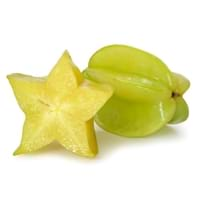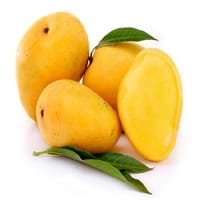Health Benefits
Cancer prevention, Heat stroke treatment
Cancer prevention, Cures fatigue, Heart care, Prevents strokes
General Benefits
Anti oxidant properties, Anti-inflammatory properties, Digestive aid, Maintains healthy cholesterol level, Treatment of sore eyes
Anti oxidant properties, Boosts immune system, Controls blood pressure, Digestive aid, Improves eye vision, Maintains healthy cholesterol level
Skin Benefits
Anti-aging benefits, Heals sunburn, Skin rejuvenation
Anti-aging benefits, Brightens and lightens complexion, Skin cleansing, Skin rejuvenation, Treatment of acne, Treatment of blackheads, Treatment of dark spots
Hair Benefits
Promotes longer and healthier hair, Protects hair
Good conditioner, Prevents hair loss, Treatment of dandruff
Allergy Symptoms
NA
Abdominal pains, Breathing difficulty, Diarrhea, Runny nose, Sneezing, Swelling of mouth, tongue or lips, Watery eyes
Side Effects
Nausea, Vomiting
Increase in blood sugar level, Diarrhoea, Weight gain
Best Time to Eat
As a snack in the late afternoon, Eat the fresh ones, avoid mixing with any other foods, don't eat after meal., Strictly avoid empty stomach
Don't consume at night and before bed, Eat the fresh ones, avoid mixing with any other foods, don't eat after meal., Morning time (before lunch)
Vitamin B5 (Pantothenic Acid)
Vitamin C (Ascorbic Acid)
Vitamin K (Phyllochinone)
Calories in Fresh Fruit with Peel
Not Available
Calories in Fresh Fruit without Peel
Not Available
Calories in Frozen Form
Not Available
Calories in Canned Form
Not Available
Calories in Jam
Not Available
Calories in Pie
Not Available
Type
Tree fruit
Tree fruit
Season
Autumn, Spring, Summer
Spring, Summer
Varieties
King, Bell, Sri Kembangan, Arkin and Fwang Tung
Alphonso, Valencia Pride, Badami, Chaunsa, Nam Dok Mai, Glenn, Sindhri, Madame Francique, Kesar and Keitt
Color
Golden yellow, Green
Orange, Red, Yellow
Inside Color
Yellowish Green
Yellow
Shape
Oval and Star(Cross section)
Oval
Taste
Crisp, Juicy, Sweet
Sweet
Origin
Sri Lanka
Southern Asia
Grows on
Not Available
Trees
Soil Type
Loam, Well-drained
Clay, Loam, Sand
Climatic Conditions
Moist, Warm to hot climate
Humid, Warm to hot climate
Facts about
- When carambola is cut horizontally, it forms a star.
- It is believed that carambola helps to cure hangover.
- Entire carambola is edible, including its skin.
- 2 varieties of carambola are cultivated: tart & sweet.
- A mango tree can bear fruits even after the age of 300 years.
- Height of a mango tree can be as high as 100 feet.
- In India, mango is known as a symbol of love. Also, a mango basket is considered as the sign of friendship.
Top Producer
Taiwan
India
Other Countries
Australia, Guyana, India, Israel, Malaysia, Philippines, United States of America
Bangladesh, Brazil, China, Indonesia, Mexico, Nigeria, Pakistan, Philippines, Thailand
Top Importer
Europe
United States of America
Top Exporter
Malaysia
Mexico
Botanical Name
Averrhoa carambola
Mangifera Indica
Synonym
Not Available
Not Available
Subkingdom
Tracheobionta
Tracheobionta
Division
Magnoliophyta
Magnoliophyta
Class
Magnoliopsida
Magnoliopsida
Order
Oxalidales
Sapindales
Family
Oxalidaceae
Anacardiaceae
Species
A. carambola
M. indica
Generic Group
Not Available
Cashew
Difference Between Carambola and Mango
We might think that Carambola and Mango are similar with respect to nutritional value and health benefits. But the nutrient content of both fruits is different. Carambola and Mango Facts such as their taste, shape, color, and size are also distinct. The difference between Carambola and Mango is explained here.
The amount of calories in 100 gm of fresh Carambola and Mango with peel is 31.00 kcal and Not Available and the amount of calories without peel is Not Available and 60.00 kcal respectively. Thus, Carambola and Mango belong to and category.These fruits might or might not differ with respect to their scientific classification. The order of Carambola and Mango is Oxalidales and Sapindales respectively. Carambola belongs to Oxalidaceae family and Mango belongs to Anacardiaceae family. Carambola belongs to Averrhoa genus of A. carambola species and Mango belongs to Mangifera genus of M. indica species. Beings plants, both fruits belong to Plantae Kingdom.









